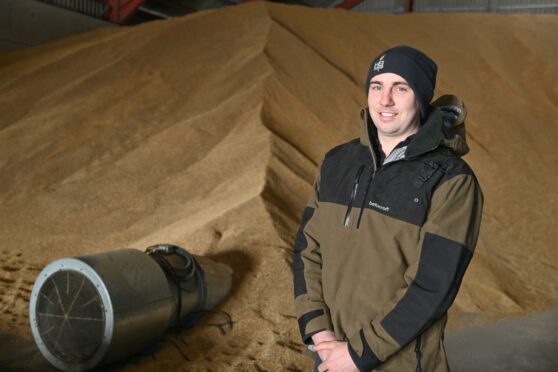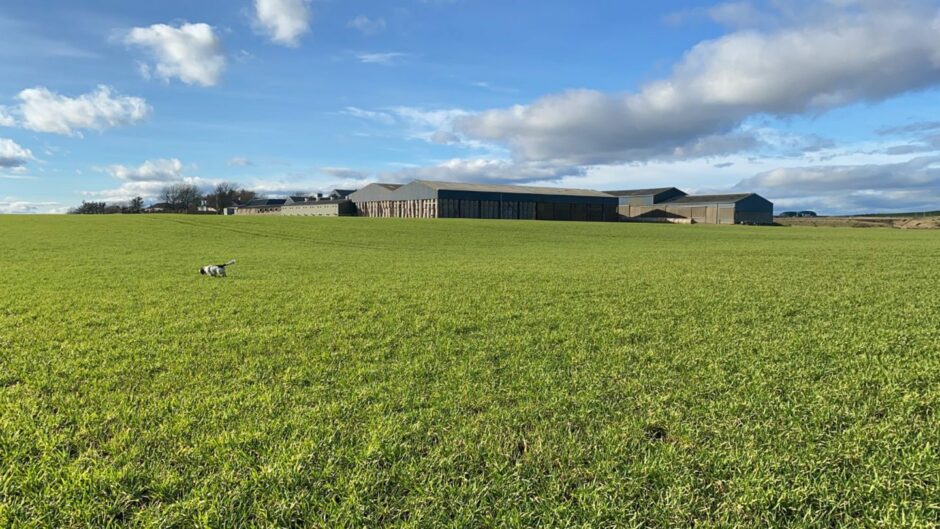As an import to the north-east farming community, I hope I can give you an insight to our daily lives at HB Farms.
I farm with my fiancé Harriet, my soon to be father-in-law Ian, and a team of six mainly on our pig enterprise.
We like to describe ourselves as an “intensive mixed farm” aiming to specialise in pig and arable production.
Any land that is not productive for crops are part of our farms environmental schemes, grass lets, woodland and solar panels.
Our editor might find this first column a one off, as I have completed it earlier than requested.
This is partly about trying to make a good first impression but unfortunately more down to our lack of spring work in the fields.
A “catchy spring” so far after an encouraging February has meant not one hectare of spring barley has been sown yet.
Luckily with the machinery, contractors and people at our disposal when a weather window does allow, a 10-day flurry of dust, horsepower and most importantly chippy suppers will put us back on track.
We are well ahead with our fertiliser programs on the winter crops, this is always one of my favourite jobs, covering lots of hectares, as I get to see how our crops have come out of the winter and how we need to tailor crop management going forward.
The problem with a slow spring is that nothing feels productive. We stop and start with cultivations and applying slurry.
When stopped we are reluctant to start any bigger projects on the farm due to being on constant alert to take the next opportunity in a field.
This has meant our wet day jobs have almost been exhausted, while our big projects are on hold until all our crops are sown.
The pig side of the farm is always busy and in a very structured routine.
The pig sector is data driven, with weekly recordings of everything happening on the farm, so we will be able to compare growth rates, feed consumption and “days to bacon” along with many other stats when making decisions on how to improve our business.
We are lucky that our team are open to trying new things and asking questions of our routines to ensure we are doing the best thing for our pigs, our people and our business.
We have been trialling a new boar on the farm to compare with the farm standard. Part of the trial has been weighing each piglet at weaning, I can assure you after picking up 300 piglets every Wednesday morning weighing an average of 9kg there is no requirement for a gym membership. Hopefully the results are worth the sweat.
I also work off the farm on a part time basis, having trained as an agronomist 9 years ago, I do really love getting out and helping advise long-term customers on growing crops. I think I would find the farm a bit claustrophobic if I was there 24/7.
I am lucky to have good relationships with my clients and I learn a lot from them and how they run their businesses. It’s great that we can share knowledge and bounce ideas of each other on a weekly basis.
In terms of agronomy, it’s going to be a balance with input costs being a record high and the grain prices dropping steadily for the last six months.
Most of the winter crops look to have great potential which makes it easier to invest in them. However, the success or failure of most crops will be determined by how the grain has been marketed this year.
Winter barley and oilseed rape are the earlier movers every year so take up a lot of the discussions at this time of year.
Not being from a farming background I have grown up always wanting to be involved in agriculture with one day having a farm in my own right.
If the 15-year-old me could see what we are involved with now it really is a dream come true. It’s easy to forget sometimes with a never-ending list of jobs, some of the unknowns such as weather, markets and breakdowns.
I remember a retired farmer once telling me to find time to lean on a gate post.
Something I try to do as often as I can, taking a breath and just reflecting at what I’m getting to do as a lifestyle and the people I get to work alongside every day.

